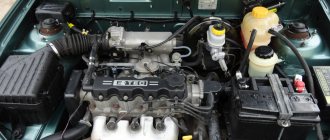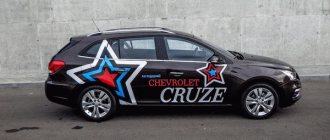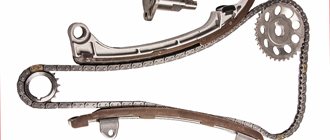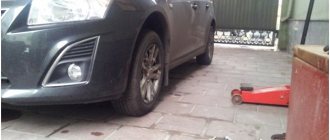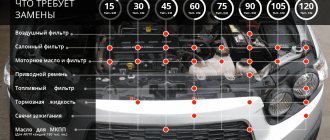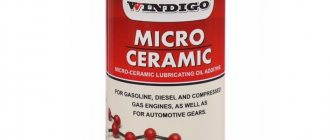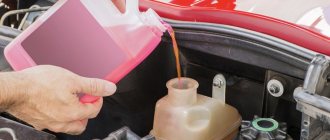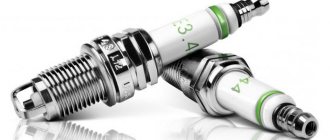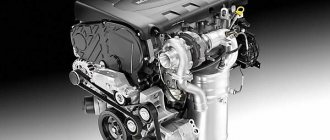Chevrolet Captiva is a five-door, five- and seven-seat compact crossover developed by the South Korean division of General Motors. The car is based on the GM Theta platform, also used in Opel Antara, Saturn Vue, GMC Terrain.
In Europe, India, Southeast Asia and the Middle East it is sold under the name Chevrolet Captiva, in South Korea under the Daewoo Winstorm brand, in Australia and New Zealand under the Holden Captiva brand.
Story
The appearance of a crossover in the Chevrolet lineup under the name Captiva was thanks to the initiative of the South Korean division of General Motors, which previously produced cars under the Daewoo brand. In 2004, constructors and designers developed the Chevrolet S3X concept car on the Theta platform (wheelbase 2707 mm), which became common to several models (Opel Antara).
It was shown at the Paris Motor Show and aroused some interest among automotive experts. But another two years passed before mass production of the model, during which the future Captiva was improved.
Finally, in the second half of 2006, assembly line production of the car began, which in the Asian market was called Daewoo Winstorm, and in the Australian market - Holden Captiva. These versions differed in their exterior design, in particular in the design of the false radiator grille, on which various badges were displayed.
Review
Design
The look turned out to be quite masculine. The grille is topped with a large Chevrolet badge. Originally located fog lights give the car a certain charm. The rear part fits very harmoniously into the overall appearance: two exhaust pipes, beautiful taillights - the result is a very solid image.
The interior has a feeling of carefully thought-out functionality. Nothing superfluous, but everything that is there is in place and looks great. Only high-quality plastic is used in the finishing. The dashboard indicators are easy to read, all control buttons are at hand, and the wood and aluminum trim (in the expensive version) looks high-quality and appropriate. Up to seven passengers can comfortably sit inside. The basic version is designed for five people. The seats are adjustable in all possible planes. The steering wheel can also be adjusted in height and angle. It houses the audio system control panel, as well as, in some trim levels, also control buttons for the cruise control system.
The trunk volume is quite impressive, and if you fold the rear seats, the usable space doubles. The rear seat can also be folded in parts (in a 60/40 ratio). By folding all the passenger seats, the volume of the cargo compartment increases to 1565 liters. By the way, for ease of loading into the Captiva, you can open the rear door glass separately. In the cabin, there is a spacious glove box for storing small luggage, which is also cooled. In the front door pockets, in addition to places for a map, there are round niches for liter bottles of water, for example.
Options
The basic equipment of the Chevrolet Captiva includes 6 airbags, an exchange rate dynamic stabilization system (ESP), alloy wheels 17, power accessories, air conditioning, CD/MP3 with the ability to control the radio on the steering wheel. There are versions of the Captiva with cruise control, fog lights, heated seats, an on-board computer, leather upholstery and 18-inch alloy wheels.
Engines
Initially for Russia, the Chevrolet Captiva was sold with two options for gasoline engines: a 2.4-liter four-cylinder DOHC (136 hp, 220 Nm / 2200 rpm) and a 3.2-liter Alloytec V6 (230 hp, 297 Nm / 3200 rpm). After modernization in 2011, the place of the 3.2-liter engine was taken by a new 3-liter power unit with a capacity of 258 hp. (from 2013 – 249 hp). The power of the 2.4-liter engine, which was equipped with a variable valve timing system, increased to 167 “horses,” and the torque was increased from 220 Nm to 230 Nm, although it moved to a higher speed zone. A 2.2 liter diesel engine with 184 hp also appeared. and a maximum torque of 400 Nm, which can please the owner with low fuel consumption (6.6 liters per 100 km).
Chevrolet Captiva Fuel Consumption Chart
Fuel consumption may vary depending on the vehicle modification. As well as the engine installed on it, the year of manufacture and other factors. All available information is structured in the form of tables below.
Generation 1
The first generation is designated C100, C140 (SUV / crossover), production years - 2006-2011, as well as the first restyling - 2011-2013, the second restyling - 2013-2015 and the third restyling - 2015-2018.
| Chevrolet Captiva Generation 1 (Restyling 1, Restyling 2, Restyling 3) | ||||||
| Modification | Average (l/100 km) | Route (l/100 km) | City (l/100 km) | Fuel type | Tank volume (liters) | |
| 2.4 l. i 16V, 136 hp | Manual transmission | 8.9 | 6.8 | 11.4 | Petrol | 65-72 |
| Manual transmission, AWD | 9.3 | 7.3 | 12.6 | |||
| Automatic transmission, AWD | 10.4 | 8.0 | 14.6 | |||
| 2.4 l. Ecotec, 167 hp | Manual transmission | 8.9 | 7.4 | 11.7 | ||
| Automatic transmission | 9.3 | 7.4 | 12.8 | |||
| Manual transmission, AWD | 9.3 | 7.6 | 12.2 | |||
| Automatic transmission, AWD | 9.5 | 7.5 | 12.9 | |||
| 2.4 l. Sport, 182 hp | Automatic transmission | 9.1 | 8.4 | 11.7 | ||
| 3.0 l. V6, 258 hp | Automatic transmission, AWD | 10.7 | 8.0 | 15.5 | ||
| 3.2 l. V6 24V, 230 hp | Automatic transmission, AWD | 11.5 | 8.7 | 16.2 | ||
| 2.0 l. VCDi, 127 hp | Manual transmission | 7.2 | 6.3 | 8.7 | Diesel | |
| Manual transmission, AWD | 7.5 | 6.6 | 9.2 | |||
| 2.0 l. VCDi, 150 hp | Manual transmission | 7.2 | 6.2 | 8.8 | ||
| Manual transmission, AWD | 7.4 | 6.6 | 8.9 | |||
| Automatic transmission, AWD | 8.6 | 7.3 | 10.7 | |||
| 2.2 l. VCDi 16V, 163 hp | Manual transmission | 6.2 | 5.3 | 7.8 | ||
| Automatic transmission | 7.5 | 6.1 | 9.9 | |||
| Manual transmission, AWD | 6.4 | 5.6 | 7.9 | |||
| 2.2 l. VCDi 16V, 184 hp | Manual transmission, AWD | 6.4 | 5.6 | 7.9 | ||
| Automatic transmission | 7.8 | 6.7 | 10.0 | |||
| Automatic transmission, AWD | 7.9 | 6.4 | 10.5 | |||
Restyling 2011 and 2013
The 2011 update affected not only the engines. The style of the car has changed radically; the soft and not very expressive appearance has been transformed by a new radiator grille and bumper, making the car much more aggressive and noticeable. And the five-speed automatic transmissions produced by Aisin were replaced by GM's own gearboxes, which turned out to be not the best decision. The second restyling of 2013 did not bring significant technical changes, and the appearance changed almost imperceptibly.
As before, the restyled crossover is available in both five- and seven-seat versions. The exterior has changed slightly. The radiator grille was updated, it received a black honeycomb grille, chrome trim around the edges and an additional strip in the center. The shape of the front bumper has undergone a slight change, and the fog lights have changed. The new headlights have a more narrowed shape. Small slits appeared on the front wings. At the rear, the car also received a new bumper, an updated design of reflectors, and the round exhaust pipes gave way to chrome-plated rectangular pipes with a sporty design. The taillights were slightly enlarged and equipped with LEDs.
Salon
There are also few changes in the interior. The instrument panel has changed slightly compared to the previous generation; now there are two distinct scales with a pleasant blue backlight. Between them there is a small display that displays engine temperature, oil pressure and several other indicators.
in real time. The steering wheel has changed its shape and received additional adjustments by the car's systems. In addition to the design, the ergonomics in the cabin have been significantly improved. The inside of the car began to look much more expensive. Higher quality plastics and fabric elements are used in the interior trim. Top trim levels have received an updated leather interior with new trim colors, new trim on the front panel and a few other minor innovations.
The possibilities for transforming the interior deserve a separate discussion. Everything comes together here and in any combination. The previous version of Captiva did not have such capabilities. Even the crossover version with a third row of seats allows you to create a flat floor for loading without dismantling the third row. The seats can be folded in any proportions you need, meaning you can carry the number of passengers you need while still getting excellent cargo space. In a completely transformed state, the car offers almost a thousand liters of usable volume. In the standard version, the luggage compartment volume is 477 liters.
Engines
Under the hood of the Russian version of the crossover there are three representatives of the updated line of engines to choose from. Two gasoline units, including a four-cylinder engine with a displacement of 2.4 liters and a power of 167 horsepower. The more powerful six-cylinder engine has a displacement of 3.0 liters and produces 249 horsepower.
The first engine is capable of accelerating the crossover to one hundred kilometers per hour in 10.3 seconds, and the average consumption is 12.2 liters. With this engine, you can choose a 6-speed manual transmission or a 6-speed automatic. With the flagship engine, the car will become faster - only 8.6 seconds to one hundred kilometers per hour, and consumption will increase to 15.5 liters per hundred kilometers. Only automatic can be used as a transmission.
The third in the line is a diesel engine, which develops 184 horsepower with a volume of 2.2 liters. The acceleration of a crossover with such an engine is 9.6 seconds to one hundred kilometers per hour, and fuel consumption is 8.5 liters per hundred kilometers in city conditions. With this engine, you can choose either a manual or automatic transmission.
All-wheel drive is offered for all car variants, but despite this you should be very careful when driving off the asphalt. The fact is that in the threshold area the ground clearance does not exceed 170 mm, and there is even less space under the bumpers.
Chevrolet Captiva configurations
Everyone chooses a car for themselves. Based on this principle, General Motors engineers have released many different versions of the Chevrolet Captiva. L.S.
The simplest configuration - LS, already includes the basic elements of comfort, without which it is impossible to imagine a modern car. The safety and stability of the car on the road is ensured by ABS and traction control, as well as ESP, equipped with a subsystem (TSA), which stabilizes the trailer when skidding. Side, front and even ceiling airbags provided the Captiva with a high score in crash tests. For the comfort of the driver and front passengers, there are heated seats. Air conditioning, CD player, 6 speakers with MP3 player support are also included in this package. 17-inch alloy wheels are also standard.
The LT package is completely identical to the LS, and is complemented by cruise control, steering column adjustment, a rain sensor, fog lights, and an interior rearview mirror with an electrochromic coating. The interior in this version is combined, made of fabric with leather elements. The steering wheel and the “skirt” of the gear lever are also covered in leather. LT Plus The Chevrolet Captiva's configurations are built on the matryoshka principle - each next one repeats the previous one, but a little more. The LT Plus adds larger wheels than the LS, a sunroof, and power-adjustable driver's seats. The interior itself is upholstered in black leather. The rear view mirrors are electrically adjustable and heated.
And, finally, the top-end trim level – LTZ. It included all the best from the previous ones, and added such pleasant little things as roof rails and tinted side windows. The rims grew again by one inch, and the number of speakers increased to 8.
Is it worth choosing a used Chevrolet Captiva?
Of course, getting into a new car made especially for you is always more pleasant. But it’s also more expensive. After all, the minimum price for the most “empty” car starts at 950,000 rubles. The most expensive equipment exceeds the two million mark. So is it worth that kind of money? Maybe yes. This is a reliable car, with good internal equipment, and, according to reviews from most owners, it practically does not break down in the first years of operation. You only have to change consumables and undergo scheduled maintenance.
At the same time, as soon as you drive out of the showroom, any car becomes cheaper. So, it will not be possible to return all the invested funds. Selling Captiva is difficult, and buyers often beat the price well. This decrease is mainly due to the expensive maintenance of a used Chevrolet Captiva, and also because of its good appetite. Otherwise the car is very decent. In used condition, this Jeep is affordable.
The minimum price for a car in 2007 in Moscow, where traditionally the lowest price tags for used cars, starts at 450,000 rubles. By becoming the second or third buyer of a Captiva, you can get a richer package for the price of a new, “empty” car. But at the same time, you can also get a bunch of “sores”, which we will discuss below.
Review of Chevrolet Captiva 2.0 VCDI (2006)
12.02.2007
The path to this car was not entirely easy, because I could not decide what kind of car I wanted. There was only one desire: the car would be new and within 30,000 euros. Initially I was leaning towards an SUV, albeit a parquet one, but still. So, in the summer of 2006, it was possible to buy a Mitsubishi Outlander, Hyundai Santa Fe, and SsangYong Kyron on the market for that price. I saw information about the Chevrolet Captiva on the Internet, visually I liked the car, but the premiere was promised for the fall, the prices were not clear, so at first I rejected the option as not possible. I traveled around the showrooms, looked at the Mitsubishi Outlander - it was considered as a ghostly option because there is no diesel engine, the model is old, and now a new Outlander will appear, in general I said no. The SsangYong Kyron has an unusual design, you can’t tell whether it’s cool or disgusting, but I still took it for a test drive, the impression was completely ruined, the interior is terrible, noisy, harsh. The main option was the Hyundai Santa Fe - price 32,000, diesel, fully packaged. The only thing that bothered me was that there were too many of them in the city and I didn’t like the design of the face a little. So far the point is, at the end of August the first advertising Captiva appeared, I went to the showroom, looked mmmmmm Orange color, price from 24,000 euros, design hmmm even very good first impressions, conversation with the dealer, I fall into the car and go, I go to the Hyundai showroom, fortunately they are literally 1 km from each other. I arrive there and begin to visually compare Santa Fe and Captiva, that’s it, I feel Santa Fe is losing ground. First day of the official premiere, test drive, ordering Captiva 2.0 VCDI tiptronic 31,800 euros, everything as planned, 1.5 months wait. What was the whole point of the preface, I just wanted a new car, a new model and all this at a reasonable price, I think it worked out. Half-leather interior, climate control, multifunction steering wheel, 7 seats, a very good standard MP3 audio system. In terms of comfort, everything is fine, maybe some people will find the driver’s seat hard, but after driving you realize that it is comfortable, this is not a limousine after all. Everything is in place, the ergonomics are good, the plastic is pleasant, soft and warm to the touch. I feel confident on the road, the diesel engine is really excellent, the jerk is like a Merc E300TD, it doesn’t wander at speed, although after 120 it’s a little noisy in the cabin, I tried 185 km/h, it doesn’t go any more. The only thing is that there is no way to meet the declared 8.7 liters per 100 km, although I saw 7.9 per 100 km on the computer when driving with a cruise.
Problems that appeared after 9000 km:
- the electric driver's mirror does not raise all the way - at -20C until the car warms up well, the low frequencies in the audio system do not work - the battery charging lamp came on a couple of times But all this will be eliminated at the first maintenance, because there is simply no time to give it to the elimination. The very first maintenance costs about 200 euros. During the first months I drove around catching curious glances; now, of course, fellow models have appeared, but still there are not as many of them as X5s or Cruisers.
25.10.2007
Exactly a year has passed since the day I started using the Chevrolet Captiva, the speedometer shows 28,000 km, and a little information has accumulated in my head about how the car performed. I'll start with the disadvantages that have surfaced this year. — The most important thing is a crack on the windshield, it appeared last winter, and at first was not noticed at all, it runs along the very bottom of the windshield, at the level of the wipers. Most likely it appeared due to the fact that in severe frosts (-25-30C ) turned on the forced heating of the glass and almost immediately started moving, I remember there was a click once when I crossed a railway crossing, probably then the glass burst. The warranty does not apply to the glass, CASCO also does not pay. In general, I got a replacement. — We replaced the driver’s seat belt, for some reason it began to stick, this is under warranty. -The mechanism that holds the driver’s seat and the slides was replaced, also under warranty. -I really don’t like the fact that you can’t open the car quietly, it croaks anyway, the service center said we can’t do anything.
-I don’t like the moment with the radio, if you stand in the dark without side lights, the display glows and the buttons are covered in darkness, that is, either touch it or turn on the light. -The seats are not very comfortable, after 200 km my back starts to ache. Still, they are a bit harsh and have few adjustments. There is also relatively weak lateral support. -The fuel consumption indicator displays data for a period that is not clear, but it definitely starts showing after 20 minutes if you move without changing speed. Well, that’s probably all the pros and cons, now about the good stuff;)
Pros and cons:
+ Yesterday I had an MOT, everything was perfect, not a single blot on the checklist. I don’t know how it is in Russia, but here at MOT they screw up for every little thing, and if you consider that during operation I don’t look at the potholes on the road and don’t drive 20 km per hour on a dirt road, then I can say one thing, SUSPENSION is a PLUS! + Fuel consumption, average consumption is about 10 liters, this is 40% city, 60% highway. The smallest consumption that appeared on the display was 7.8 liters in a straight line and on a cruise. + The car is still not so common, and stands out from the general stream. + I’m pleased with the dynamics, as well as the cross-country ability. + High-quality interior, considering that the child constantly rubs here and there, drops something and gets dirty, the interior is easy to clean, the plastic has no scratches at all. After a year of operation there are no thoughts about selling, I think for another couple of years the car will bring only joy)))))
Buyer advice:
At the moment I can’t say anything bad, if you’re looking for a new car for 30,000, then take a closer look, there’s a high probability that you’ll find exactly what you’re looking for!
28.10.2008.
Another year has passed, almost 60,000 km on the odometer. To the chagrin of a certain group of people who consider themselves to be categorical opponents of the Korean automobile industry, I solemnly declare the complete absence of any defects over the last year of operation. Just the other day I passed the MOT without a single comment, although To be honest, I was a little worried about the chassis, because I don’t really follow the speed limit on dirt roads. The engine runs flawlessly, it started without problems at -32 C, fuel consumption remained the same, about 10 liters in mixed mode.
I installed a subwoofer + amplifier to the standard stereo system, the sound impression is very good, the only drawback is noise insulation, I need to work on that. I wanted to change the casting to 18″, but the toad did not allow me to do this, since two sets of tires came with the car, and so far they are more than alive.
By and large, there are no super emotions, after all, I didn’t buy it yesterday, I can’t talk about how I drove to the limit of the possible on mountain serpentines, or competed with the Mitsubishi EVOLUTION from the start, I can only note that the third row of seats is sometimes useful and it can really accommodate, if not two men, then two girls for sure, and travel a distance of 100 km without much discomfort. And the interior does not react at all to various dirt, it is still clean and unworn, although the child uses it as soon as he pleases.
At the end of the short story, a conclusion-opinion suggests itself, and it will be this: - the car lives up to my hopes, the entire list of shortcomings that appeared in the first year of operation were eliminated and are now unheard of. The car is reliable, roomy, with a moderate appetite, does not get lost in the city traffic (probably more because of the color). At the moment there are no prerequisites for its sale, I hope they will not appear in the future either.
Breakdowns and operational problems
Body and interior
The body of cars produced by GM Korea does not have a particularly durable paint coating, but even at ten years of age there are no obvious problems with corrosion. The new GM standard affects the quality of protection of steel structures. What is needed here is galvanized, and something else is covered with a thick layer of mastic and plastic. They only forgot about the fifth door, and some of the seams in the engine compartment may have damage to the sealant and traces of corrosion already at the age of several years.
The obvious disadvantage is that the thickness of the metal of the outer panels is not impressive; they bend easily with your finger. This is all the more strange since the weight of the car is over one and a half hundred kilograms more than that of its main competitors. But according to the reviews of those who have been in serious accidents with Captiva, the secret is revealed: the car has a very solid foundation, more reminiscent in the design of the side members of serious “rogues” than a light crossover.
Sound insulation, which adds weight, is also very high quality - even the role model in this class, the second and third generation RAV4, turned out to be much noisier. However, the cabins of the co-platform Antara and SRX are even quieter, so the Captiva is still far from reaching the limit of perfection.
The interior is quite simple - there is decent but not great plastic, cheap leather and simple high-quality fabric. Design in the style of cheaper Chevrolets greatly lowers the level of the car, distancing it from the more expensive Opel and Cadillac. It’s especially a shame about the quality of the seats – the driver’s seat could use a more noble profile. During the restyling process, the interior was “ennobled”, making it visually more expensive, but, unfortunately, this modernization did not affect the seats.
Electrics
The electrical equipment of the body and interior is not completely problem-free, although it does not present expensive problems - this is generally typical for GM cars. What's worse is that the engine compartment wiring and underbody electronics suffer quite a lot. The engine compartment "braid" is too "delicate" - sand that gets into the corrugations after several years of operation can cause numerous violations of wire insulation and equally numerous failures in on-board systems - mainly in the engine.
After off-road trips, it is recommended to rinse the engine compartment very thoroughly and generally monitor its cleanliness. By the way, “sweating” motors create a lot of troubles - traces of lubricant over time heavily contaminate the compartment below and allow sand to linger inside.
The wiring to the ABS system sensors and all-wheel drive clutch is also vulnerable. After crossing fords and serious puddles, it is recommended to check the tightness of the connectors or add lubricant to them at least once every couple of years.
Severely chafing front optics, a leaky brake light on the rear door, poor wiring of the rear license plate lights are generally typical for all inexpensive cars, and should not be taken as a serious drawback of the model. Well, there are no failures of the on-board multimedia system simply because of its simplicity.
Chassis
Car suspensions for passenger cars can be considered exemplary reliable and inexpensive, too. They can even withstand off-road travel without much damage, unless, of course, you drive on dirt and potholes with a loaded car. However, the reliability of the shock absorbers is below average - after 30-40 thousand kilometers they will lose efficiency, and the car’s handling will noticeably deteriorate. You can reach 100-150 thousand with the “original” kit, they won’t leak unless you overheat them, but the driving pleasure is not the same.
Stabilizer struts are completely consumable, as are bushings. With an active style of movement, they have to be changed at every second maintenance if you do not want to listen to their knocking. By the way, its reason may not only be in the suspension - there is a very “delicate” steering rack, which begins to knock at mileage over 50 thousand. But if you monitor the fluid level in the power steering expansion tank, it can work in this state for a very long time - the backlash is minimal, and leaks are usually almost unnoticeable. The power steering pump is not very reliable, but pumps from Opel cars are perfect with minimal modifications, although according to the code they “do not break.” This will be useful to you if the car owner has missed the ATP level in the tank at least once, because the part is not reliable.
Transmission
The reliability of transmissions can generally be assessed as average. Manual transmissions generally do not cause any special problems - you just need to monitor the oil level, because quite traditionally for GM gearboxes “sweat” oil.
The strength of the front CV joints and drives is sufficient, except that with a 3.6 engine and a top-end diesel engine there are cases of “cutting off” the splines on the shafts - most likely, one of the batches of drives was not very successful. At the same time, the hinges themselves are reliable and can withstand even short-term work with a torn cover, but here it is important to notice oil leaks in time. The CV joint covers themselves are too “delicate” and tear easily off-road. The same problem occurs with the propeller shaft on all-wheel drive versions; the rubber intermediate support usually fails, followed by the bearing. Theoretically, in case of such a breakdown, the entire propeller shaft needs to be replaced, but in reality there is a completely running cardan bearing with dimensions of 71.4 * 24.6, which can be found even on GAZ cars, and a repair insert for the rubber band can also be bought.
After restyling in 2011, they installed a new six-speed gearbox of GM’s own production, 6T45/6T40 series. Unlike the Japanese automatic transmission, it turned out to be more twitchy, more prone to overheating, with an even shorter life of the gas turbine engine and serious problems with the liners of the box itself.
In addition, in the first years of production there were enough “childish” problems with the valve body, and the cooling system was left the same, which the new box clearly lacked. As a result, restyled cars have every chance of getting into the “box” service earlier than pre-restyled ones. There are often cases of failures during the warranty period, with very short mileage. True, the box is a little simpler for minor repairs, they are cheaper. But if the bushings are damaged, an extremely costly operation will be required - it is often easier to replace the assembled box.
Motors
One of the big advantages of cars before restyling is, oddly enough, the weakest 2.4 engine. After all, this is an old Opel engine, only with very “squeezed” firmware and bored out to a volume of 2.4. The motor itself is extremely reliable - it has a cast-iron block that is resistant to overheating and other troubles, a strong piston group, a simple control system and an inexpensive “piping”.
By the way, a feature of cars with V6 before restyling is a very expensive exhaust system with a valve that turns off the left muffler at partial loads. Therefore, the left one turns out to be twice as expensive as the right one, all 23 thousand rubles. Since 2010, this system of questionable efficiency has been removed, and the mufflers again cost the same.
The 3.0 engine is a newer series, it has direct injection, a more reliable timing belt and a very successful injection pump. It’s simply too early to talk about any serious problems; they haven’t had time to manifest themselves, but many owners noted a decent oil “appetite” and the same tendency to overheat at the slightest hint of contamination of the cooling system. All gasoline engines are highly recommended to have an oil change interval of no more than 10 thousand kilometers, except for the good old 2.4 136 hp. it's not that critical. And the “native” oil DEXOS2 5W30 is also not the best choice. For V6 engines, SAE50 oil is generally recommended, and for in-line fours, regular SAE40 is sufficient. By the way, according to some reviews, the life of the timing chain greatly depends on the oil and its level.
2.0 diesel engines in cars before restyling did not cause any particular complaints from owners. Despite the fact that they arrived in Russia only after driving through Europe, such cars were not officially sold here. Due to the small number of serious statistics on them, there are no serious statistics, except perhaps complaints about the not very long life of the injectors, sensitivity to bad diesel fuel and the timing belt life in our conditions is no more than 60 thousand kilometers.
Advantages and disadvantages of the car
Advantages of the Chevrolet Captiva: the most important positive feature of the crossover is its accessibility, it is relatively inexpensive and has good equipment, is comfortable, spacious and functional, and also has all-wheel drive. Although it has a few engines, they all have quite a lot of power. And the lineup includes a diesel power unit, which is popular in Russia. In addition, we can note the high ground clearance and good ergonomic suspension. Also pleased with the availability of manual and automatic transmissions.
Disadvantages of the Chevrolet Captiva: the negative aspects include high fuel consumption, which is typical for American car brands. The suspension is still a little harsh, and you can feel it when you hit another pothole on the road. The car was also adapted for off-road use, but off-road driving itself eventually disrupts the operation of the automatic transmission if you drive the Captiva as if you were driving a real frame SUV. The lack of dynamics can also be called a minus; this is what the car lacks.
What to buy?
If the dynamics of the pre-restyling 2.4 engine with automatic transmission are enough for you, then the Chevrolet Captiva is a good choice. You just have to be content with the old interior and rather boring appearance. Newer cars seem to have fewer problems, but a noticeable increase in the number of automatic transmission failures suggests that in the near future this unit may become really troublesome. On heavy vehicles, all wear processes occur faster, and the difficulties faced by owners of Opel Astra and Chevrolet Cruze with a 6T40 automatic transmission will seem trivial in comparison with the troubles of Captiva owners.
The restyled 2.4 is essentially also not a very new engine, it is noticeably more dynamic and powerful, and in combination with a manual gearbox, no operational difficulties are expected up to a mileage of 120-150 thousand.
Perhaps in new series of engines the chances of premature timing failure have also decreased, so this is a good choice. V6 engines, both before and after restyling, require more attention. And if the 3.2 engine in combination with a five-speed automatic transmission is generally quite reliable with proper maintenance, then the condition of the automatic transmission on a three-liter is already a mystery. The more powerful automatic transmission of the 6T45 series will most likely have the same set of problems as the more common 6T40, but whether they will appear with a mileage of up to hundreds of thousands or will require expensive repairs with a mileage of over 150 is not yet clear.
Video
Review of the Chevrolet Captiva 2.2 TD AT 16V (184), 2012.
I bought my Captiva in the fall of 2012. It took a long time to choose the car with the whole family, my wife and two sons. We looked for a long time and couldn’t decide which car to take; I wanted something family-friendly, big, but the minivan didn’t inspire confidence in me. I decided to search on the Internet for what kind of SUV-like cars there are on the market (well, so that I could go fishing without any unnecessary worries), but also to make it convenient to travel with children, and my choice fell on three crossovers with approximately similar characteristics. The choice was between Captiva, Sorento and Santa fe. I wanted a modern car with an automatic transmission, quite nice in appearance, reliable, but at the same time powerful. In the end, I settled on a Captiva with the maximum configuration. The Santa Fe was immediately dropped because of the design, I didn’t like it at all, and the choice between Sorento and Captiva was obvious, the deciding factor was the price, yes, it was the price, the Captiva cost me 1,165,000 rubles, and the Sorento in its cheapest configuration (diesel , automatic) would have cost me 1,400,000, not to mention the maximum configuration... After our long-awaited purchase, we went to take the children to relatives, summer vacation from school. Well, here the most interesting thing began: for the first 100 kilometers we simply could not enjoy this wonderful feeling of a new car. On the road you feel like a king, the car is cool and comfortable, you can’t hear the sounds of the street (the sound insulation was pleasing, it was done well), the car walked along the road confidently. We came to our relatives, happy (well, after a domestic car, I wish I could switch to a car that is much higher class). Although there was still one minus, after 300 kilometers a knocking sound appeared in the rear of the car, for a long time I could not understand what was knocking, it turned out to be the fastening of the seat belts for the rear passengers, but otherwise everything was fine. By the way, the rear seats are adjustable, you can fold them out like a bed, in the entire trunk, the children really liked it. Well, with my height of 180 cm, I could easily lounge in this trunk and even fool around with the children, and what I also liked was that there were no small parts either in the cabin or in the trunk, everything was neatly hidden behind the trim. Returning home to Moscow (the mileage had already become more than 800 kilometers), I began to notice that the engine cooling fan was still running for a minute, or even two, after turning off the engine, I didn’t like it. Although this may be due to the fact that with a 2.2-liter diesel engine I felt like a racer, and I drove on the highway a little, the car behaves obediently, overtaking is easy, at high speeds the steering wheel becomes noticeably heavier (in my opinion this is a very good trait), which improves handling. But with such driving, the fuel consumption of a two-liter jeep is very impressive. Although I knew what I was getting into when I took such a volume. In general, I think the car is worth the money, there are very few disadvantages, more advantages, take it you won’t regret it, cheap and cheerful, as they say.
